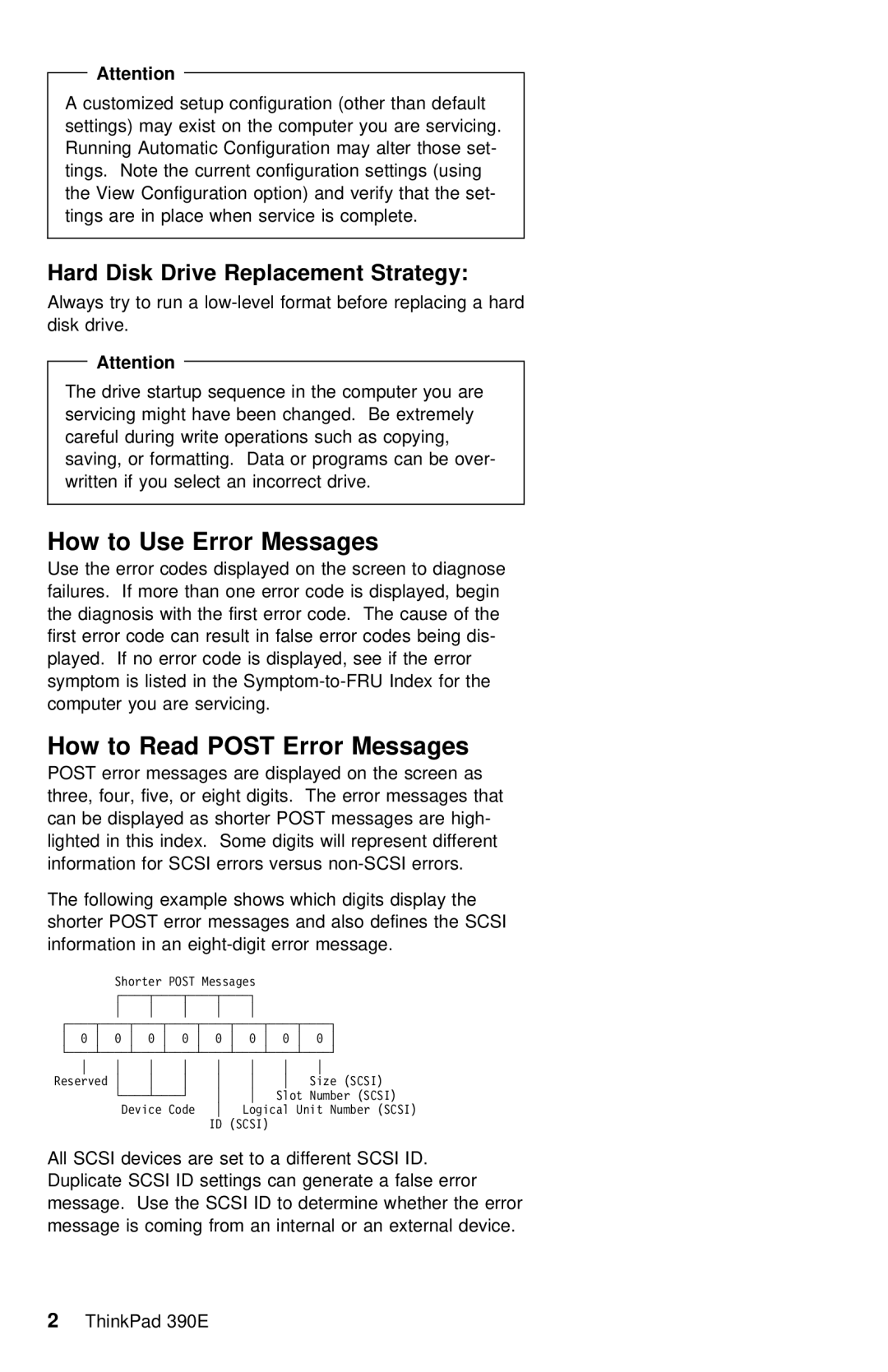
| Attention |
|
|
|
|
| |
|
|
|
|
|
| ||
A customized setup configuration (other | than default | ||||||
settings) may exist on the computer | you | are | servicing. | ||||
Running Automatic Configuration may alter those | set- | ||||||
tings. Note the current configuration | settings | (using | |||||
the | View | Configuration option) and | verify | that the set- | |||
tings | are | in place when service | is | complete. |
| ||
|
|
|
|
|
|
|
|
Hard Disk Drive | Replacement | Strategy: | |
Always | try to | run a | |
disk | drive. |
|
|
Attention
The drive startup sequence in the computer you are servicing might have been changed. Be extremely careful during write operations such as copying, saving, or formatting. Data or programs can be over- written if you select an incorrect drive.
How to Use Error Messages
Use the error codes displayed on the screen to diagnose failures. If more than one error code is displayed, begin the diagnosis with the first error code. The cause of the first error code can result in false error codes being dis- played. If no error code is displayed, see if the error symptom is listed in the
How | to | Read POST | Error | Messages |
|
POST error messages are displayed on the screen | as | ||||
three, | four, five, or eight digits. The error | messages that | |||
can | be | displayed | as | shorter POST messages are | high- |
lighted in this index. Some digits will represent different information for SCSI errors versus
The following example shows which digits display the shorter POST error messages and also defines the SCSI information in an
| Shorter POST Messages |
|
| ||||
|
|
| |||||
| + | + | + | + | + |
|
|
+ ð + | ð + ð + ð + ð + ð + ð + ð + | ||||||
,3333"3333"3333"3333"3333"3333"3333"33332 | |||||||
+ | + | + | + | + | + | + | + |
Reserved | + | + | + | + | + | + | Size (SCSI) |
| ,3333"33332 | + | + | Slot Number (SCSI) | |||
|
| Device Code | + | Logical Unit Number (SCSI) | |||
|
|
|
| ID (SCSI) |
|
| |
All SCSI devices are set to a different SCSI ID. Duplicate SCSI ID settings can generate a false error message. Use the SCSI ID to determine whether the error message is coming from an internal or an external device.
